Community science, also called citizen science, is the term given to research conducted by members of the public. Community science contributions are a valuable resource in our research at Cascadia, and have frequently helped to improve our understanding of the species and issues we study.
To explore community science at Cascadia by region continue to scroll down, or click on any of the shortcuts below:
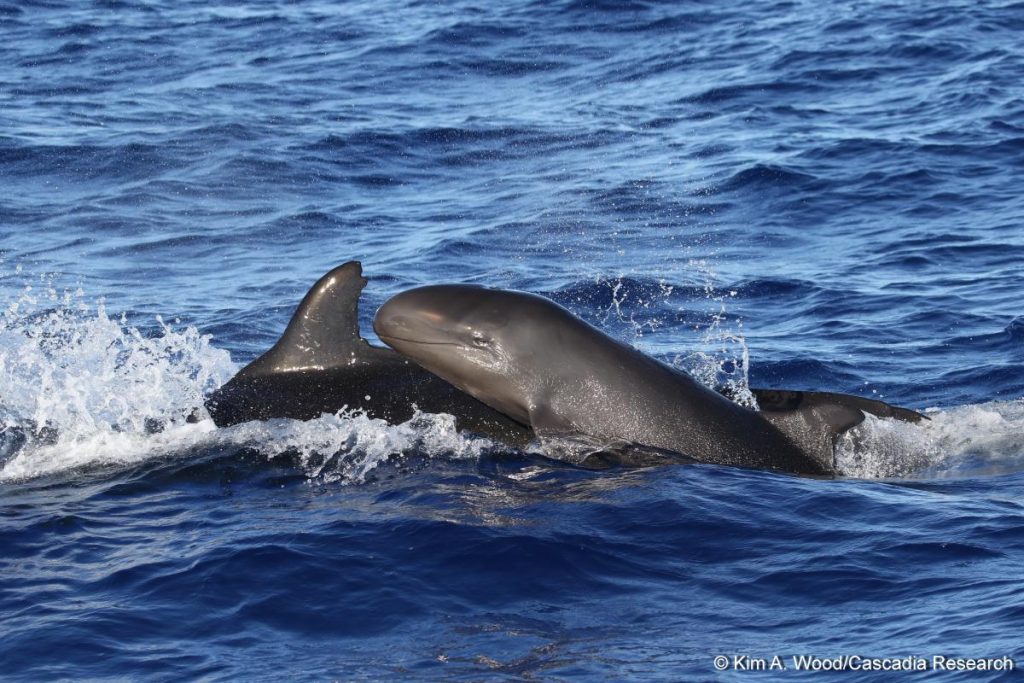
Hawai‘i
Photographs taken by whale watching or sports fishing charter operators, passengers on sightseeing or sportfishing trips, and private individuals out boating have all contributed to helping understand the residency and movements of Hawaiian whales and dolphins, and well as the threats they face.
If you have photographs of the dorsal fins of any Hawaiian odontocetes (other than spinner dolphins), Fin whales, or Sei whales from any of the Hawaiian islands, and are willing to share these photographs for comparisons of inter-island movements, please contact Sabre Mahaffy and Robin Baird at hawaii@cascadiaresearch.org, and include the date and location where the photographs were taken.
WHALE AND DOLPHIN PHOTOS WANTED
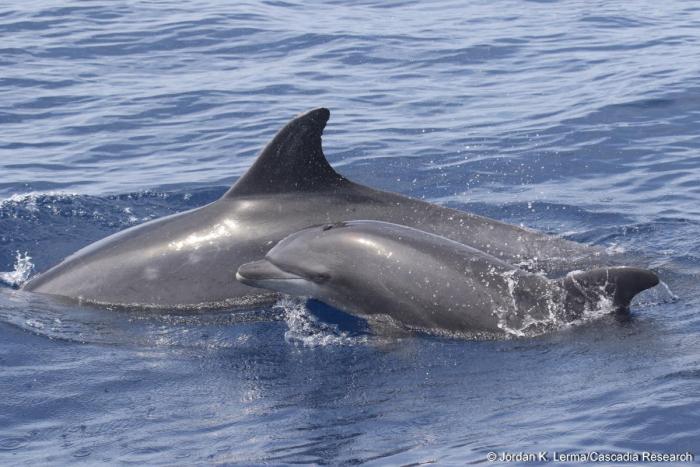
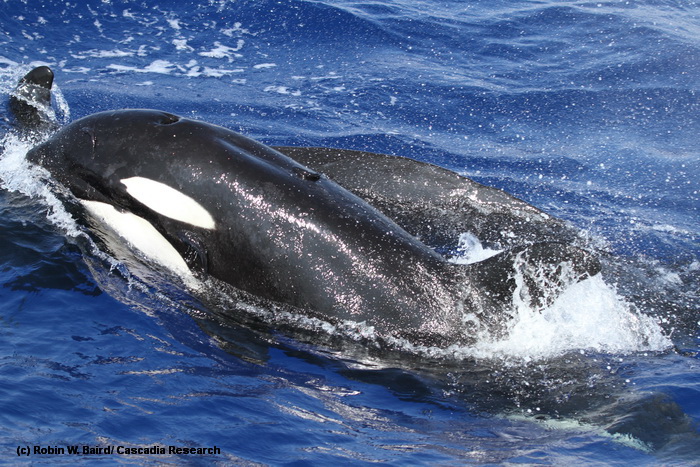
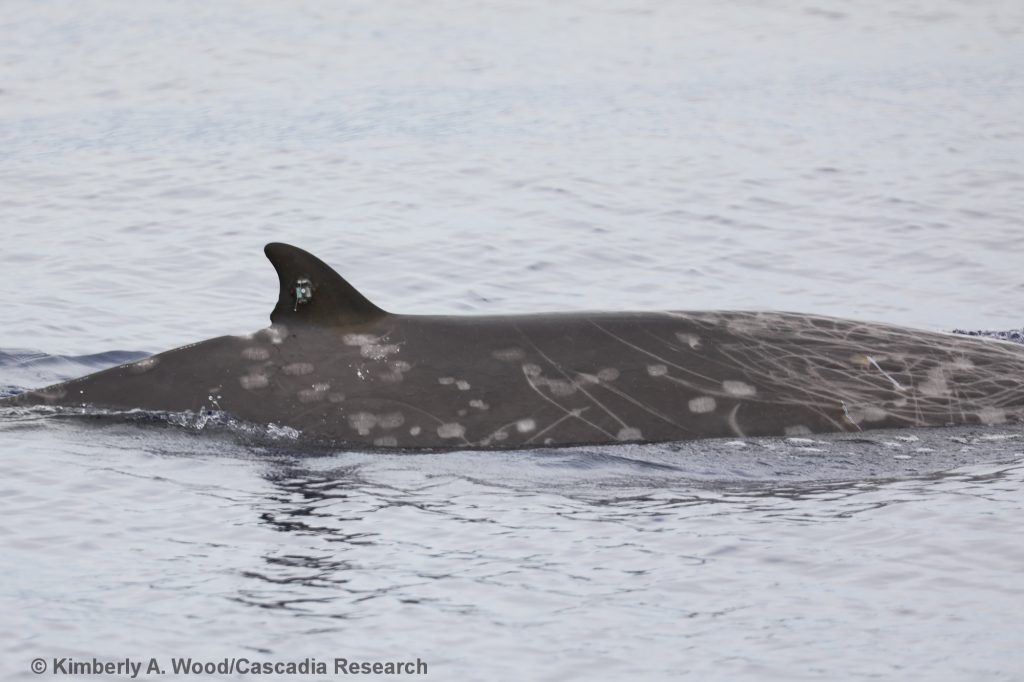
To assist with on-going studies to examine movements of resident populations of toothed whales and dolphins in Hawaiian waters, we are looking for photos of a number of different species to compare to existing photo-identification catalogs being managed by Cascadia Research Collective, a non-profit research organization.
We are interested in obtaining photographs of 12 species: Cuvier’s beaked whales, Blainville’s beaked whales, Longman’s beaked whales, killer whales, short-finned pilot whales, pygmy killer whales, false killer whales, melon-headed whales, bottlenose dolphins, rough-toothed dolphins, sperm whales and dwarf sperm whales. Photographs are typically needed of the dorsal fin and area surrounding the fin, although for beaked whales photos of the scarring on the body can be used to match individuals, and for sperm whales fluke photographs are used to identify individuals.
For more information on this research see:
www.cascadiaresearch.org/hawaii
To submit photos or for additional information check this link, or contact us at Hawaii@cascadiaresearch.org

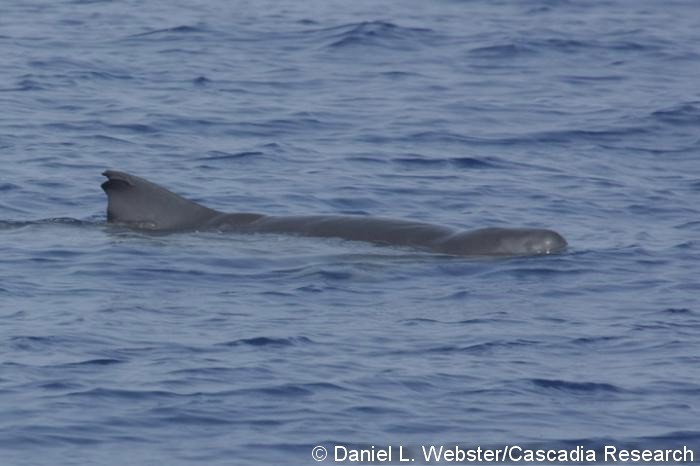
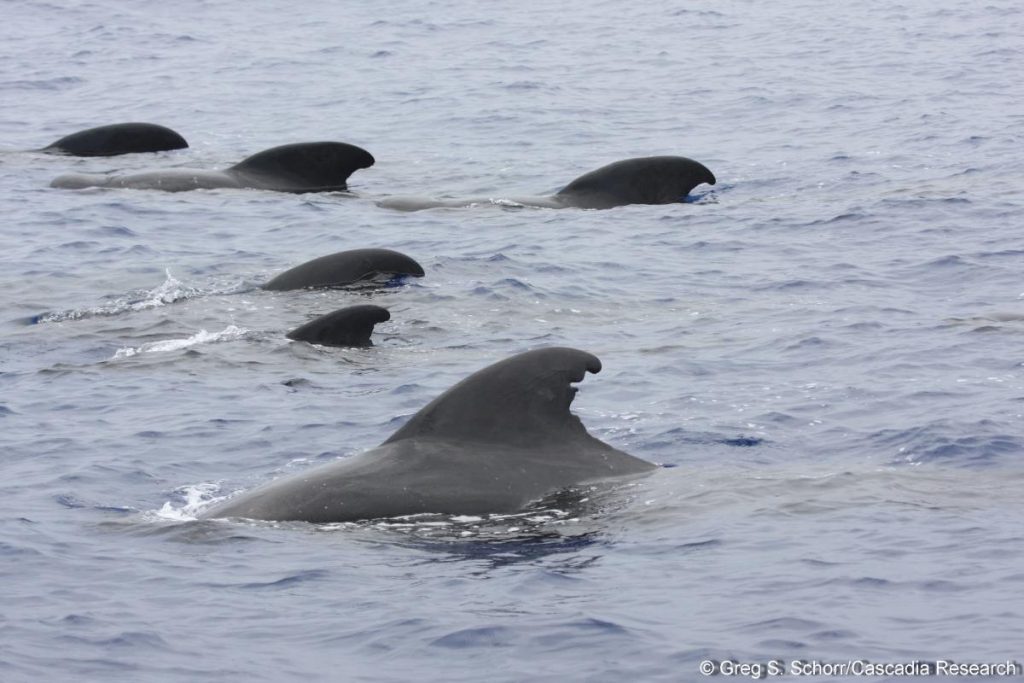
Below is a word cloud that shows the individuals and organizations that have contributed photos of dolphins and whales to our 13 different Hawaiian species photo-ID catalogs, with the size of their names reflecting their relative contributions, through the end of 2019.
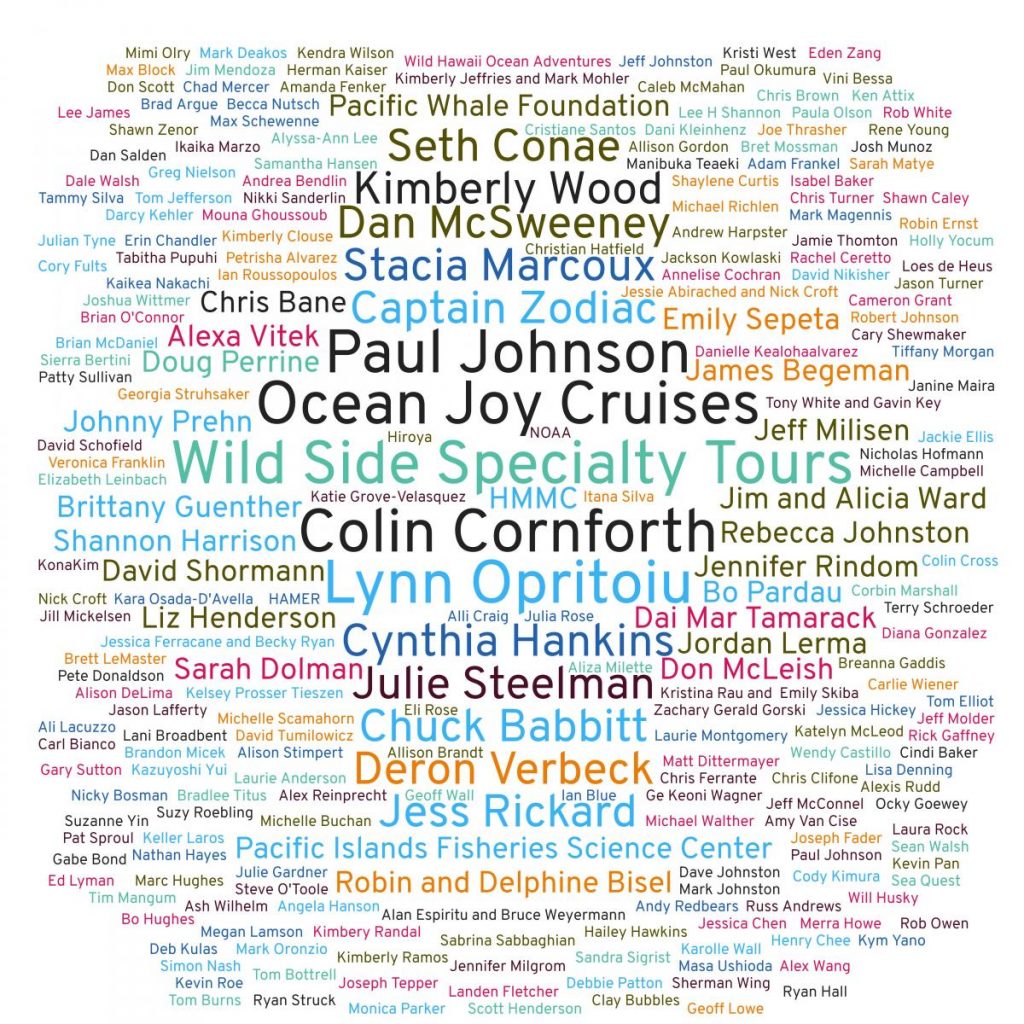
Our sincere thanks go out to everyone who has contributed photos in the past and we hope that individuals who encounter Hawai‘i’s dolphins and whales will continue to contribute, to help us learn more about the unique ocean community surrounding the Hawaiian Islands!
U.S. West Coast
Cascadia has undertaken a long-term photo-identification study of humpback and blue whales along the west coast of the United States and Central America since 1986. As part of this study, we utilize photographs from community scientists to expand our catalogs with new sighting information and photographs. Our humpback whale catalog includes over 5,500 unique individuals as of 2018, and our blue whale catalog includes over 2,500 unique individuals as of 2018.

For information about collaborating with Cascadia Research on these long term research projects or if you have questions about our research please contact John Calambokdis at calambokidis@cascadiaresearch.org.
To submit a photograph of a blue or humpback whale to be used in our research please send them to Elana Dobson at edobson@cascadiaresearch.org. Please include the date, time and location of the sighting.
Central America
From the west coast of Central America we have a long-term photo-identification catalog of false killer whales, and are always looking to add photos from along the west coast. If anyone has photos of false killer whales along the west coast, please contact Annie Douglas at abdouglas@cascadiaresearch.org